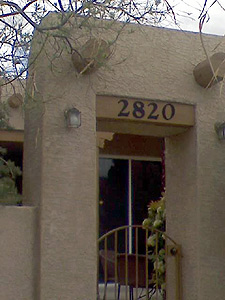¡Maestro! Estos pájaros son pintados
Edward Crocker
Some years ago I spent some time in Mexico drilling water wells. It was a trifecta for me because I love drilling for water, I love Mexico, and I had nothing else to do. I was only there for two years before the economy broke down, the banks were nationalized and the currency devalued; so I headed home to undertake other enterprises. About half of my time in Mexico was spent in the state and city of Durango, which was kind of like living in the Old West. I made some good rough-and-tumble friends there and liked the authenticity of the place a lot. There were no pretenses of anything fancy in Durango; it just was what it was, not glamorous, but very fascinating in a gruff sort of way.
The image of Durango that I retain in my mind is not of architecture, though it has some magnificent edifices; nor of cattle, though it has some of finest looking and tastiest beasts that I have ever encountered; or the rugged, mountainous landscape. What I remember, and what testifies to the authenticity of place, was riding around one day with my tool pusher, a local fellow with a fine sense of humor who was looking for a gift for his wife. When he spotted a vendor with a cage full of colorful birds, my man rolled down his window and took a close look at the birds as the vendor approached in hopes of a sale. The latter's enthusiasm was curbed by the look of approbation he received from his potential client and turned downright sour when my tool pusher (apparently a bit of an ornithologist) said sternly, "¡Maestro! Estos pájaros son pintados" and drove slowly, defiantly away. He would have nothing to do with dyed birds.
Last week my daughter Amanda, whose sense of authenticity is well honed from her years of work at El Rancho de las Golondrinas, sent me a few photos of houses in Albuquerque and a note of outrage about what they depicted. She had apparently been walking through a neighborhood with her beau and spotted house after house with free standing, arched gateways with little nubbins of vigas sticking out of both sides. I have become nearly blind to the ubiquitous Pueblo Revival clichés we see around here, even at their most absurd, though these were definitely a 9 on an absurdity scale of 10.


One should, I suppose, try to find the humor in architectural clichés and not take them too seriously. Like the buildings you see now and then with the vigas coming out of all four sides; just imagine the "rustic checkerboard" coffered ceiling that would result if there really were criss-crossing vigas. Or the wee little vigas that are sometimes glued on to a massive façade. Given the mass of the building, the tiny logs wouldn't stand a chance of bearing the prescribed loads and even the casual passerby intuitively recognizes that.
"Try," I say, to ignore them. But I must admit that my reaction is much the same as that of the old tool pusher in Durango toward the painted birds. "A bird," he told me as we rolled on, "no matter how plain, does not need to be painted." Nor does one need to tart up a building and pretend it is something it isn't.

